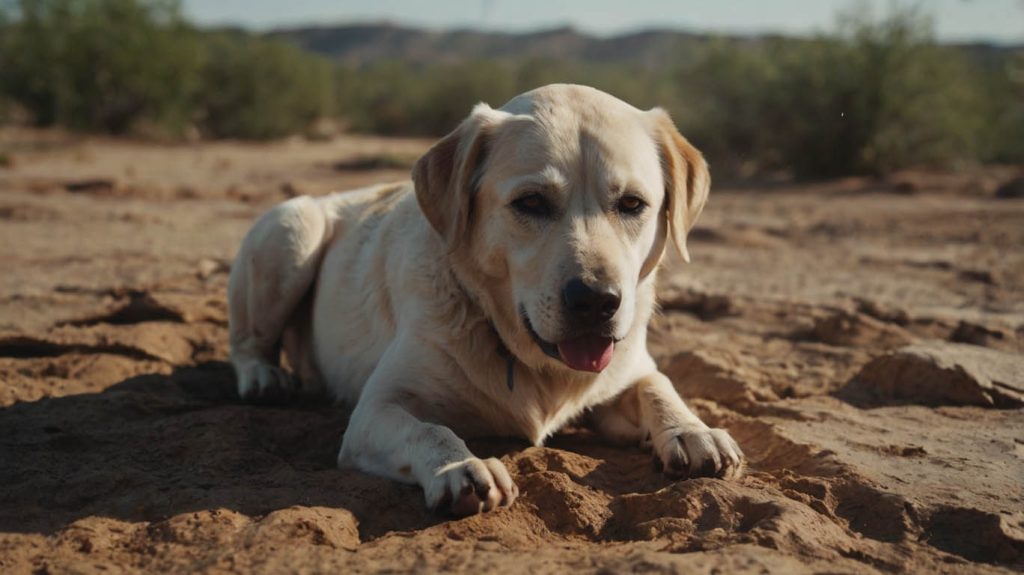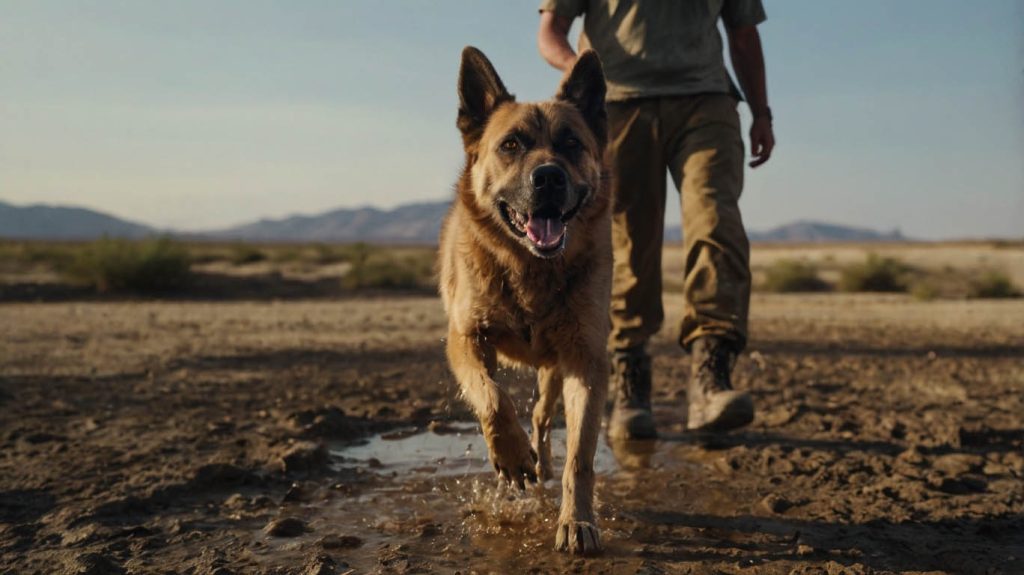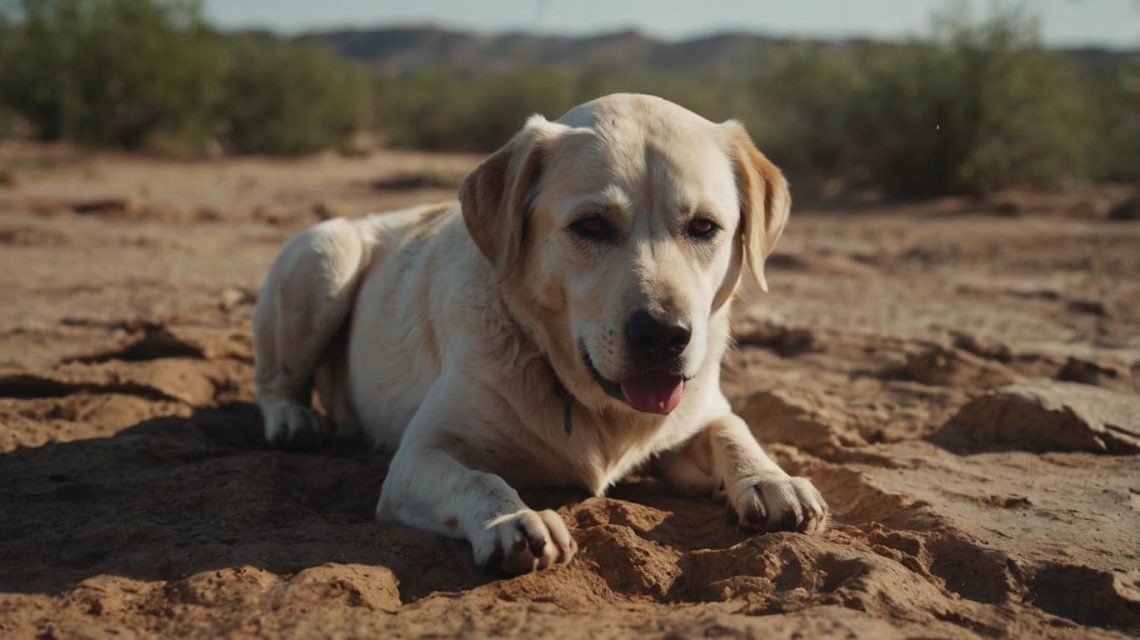If a Dog is Dehydrated: A Step-by-Step Guide for Worried Owners
Megan and her energetic Border Collie, Rocky, had just returned from their favorite activity: a long hike on a sunny afternoon. Rocky was his usual happy self, chasing squirrels and splashing through a creek. But later that evening, something was off. Rocky, who usually shadowed Megan everywhere, was lying quietly in the corner. He showed no interest when she picked up his leash for their evening walk. A small knot of worry began to form in Megan’s stomach. She found herself asking the question every concerned pet owner has asked: what do I do if a dog is dehydrated?
This question is one of the most common and critical queries in pet ownership. Dehydration can range from a mild issue to a life-threatening emergency, and a dog can’t simply tell you they feel unwell.
Consequently, the responsibility falls on us to be detectives—to know the signs, understand the risks, and have a clear plan. This guide is that plan. We will walk you through exactly what to look for, what to do, and when to seek immediate help if a dog is dehydrated. Therefore, you can turn your worry into confident action.
What to Look for If a Dog is Dehydrated
The first step is observation. The symptoms of dehydration exist on a spectrum, from subtle changes in behavior to alarming physical signs. Knowing both ends of this spectrum is crucial.

Checking for Early Signs If a Dog is Dehydrated
These are the first quiet whispers from your dog’s body that something is wrong. Catching them early can prevent a serious crisis.
- Lethargy and Low Energy: This is often the first and most noticeable sign. Your normally playful dog might seem unusually tired, listless, or unwilling to engage in favorite activities. Rocky’s sudden lack of interest in his walk was a classic example.
- Dry or Sticky Gums: A healthy dog’s gums should be wet and slick. Gently lift your dog’s lip. If the gums feel tacky or sticky to the touch, it’s a primary indicator that their body is conserving water.
- Loss of Appetite: Many dogs will refuse to eat when they feel unwell. A sudden disinterest in food, especially if a dog is dehydrated, is a significant red flag.
- Thick, Ropy Saliva: Instead of normal, thin saliva, you might see thick, stringy drool. This is another sign of the body reducing its water output.
Identifying Severe Signs If a Dog is Dehydrated
If you see any of the following signs, the situation has progressed from mild to severe. This is a veterinary emergency.
- Sunken Eyes: This is a grave sign. The fatty tissue behind the eyes loses moisture, causing the eyes to appear hollowed out, dull, and sunken into the skull.
- Loss of Skin Elasticity: This is a definitive test that confirms significant fluid loss. We will detail how to perform this test below.
- Delayed Capillary Refill Time (CRT): This indicates that the dehydration is severe enough to affect blood circulation.
- Weakness or Collapse: In a state of severe dehydration, a dog may be too weak to stand or may collapse. This signals that the body is entering a state of shock.
The Two Most Important Checks If a Dog is Dehydrated
When you suspect dehydration, you need to move beyond simple observation and perform two quick physical tests. These will give you concrete evidence of your dog’s hydration status.
How to Perform the Skin Turgor Test
This test measures the skin’s elasticity and is a reliable indicator of dehydration.
- Gently grasp the loose skin on your dog’s back, between the shoulder blades.
- Lift the skin up and away from the body.
- Release it.
- In a well-hydrated dog, the skin will snap back into place instantly.
- However, if a dog is dehydrated, the skin will “tent,” meaning it will return to its normal position slowly, or in severe cases, remain raised for several seconds.
How to Check Capillary Refill Time (CRT)
This vital test measures how well blood is circulating.
- Carefully lift your dog’s upper lip to expose the gum tissue.
- Press your index finger firmly on the pink part of the gum until it blanches (turns white).
- Remove your finger and count how many seconds it takes for the normal pink color to flood back into the area.
- A healthy CRT is less than 2 seconds.
- If a dog is dehydrated severely, the CRT will be longer than 2 seconds, indicating that blood flow is sluggish due to decreased blood volume.

Your Immediate Action Plan If a Dog is Dehydrated
Okay, you’ve done the checks and you believe your dog is dehydrated. What now? Your response should be dictated by the severity of the symptoms.
First Aid for Mild Cases If a Dog is Dehydrated
If your dog is showing only mild signs (e.g., slight lethargy and sticky gums after exercise) but is otherwise alert, you can take these immediate steps.
- Move them to a cool, quiet place. Get them out of the heat and into the shade or air conditioning.
- Offer small amounts of fresh, cool water. It is crucial to offer small amounts frequently rather than a large bowl all at once. Gulping too much water can induce vomiting, making the dehydration worse.
- Try ice chips. Many dogs are more willing to lick ice chips than drink from a bowl.
- Consult your vet before giving anything else. Do NOT give your dog sports drinks. For electrolytes, you must call your vet first to get their recommendation and the correct dosage for a product like unflavored Pedialyte.
When to Call the Vet Immediately If a Dog is Dehydrated
This is not a situation for hesitation. You must seek immediate veterinary care if:
- Your dog shows any signs of severe dehydration (sunken eyes, skin tenting, weakness, delayed CRT).
- Your dog is vomiting or has diarrhea. They are losing fluids faster than you can replace them.
- Your dog refuses to drink any water at all.
- The dog is a puppy, a senior, or has a pre-existing health condition (like kidney disease or diabetes).
- If you are ever in doubt, make the call. It is always better to be safe.
Understanding Why Your Dog Might Be Dehydrated
Knowing the cause can help with prevention. The question “if a dog is dehydrated” is often answered by one of these scenarios.
- Illness: This is the most common medical cause. Any condition that causes vomiting or diarrhea (from parvovirus to pancreatitis) will lead to rapid fluid and electrolyte loss.
- Heat and Overexertion: This is precisely what happened to Rocky. Active dogs lose a tremendous amount of water through panting, and they often don’t drink enough to compensate during activity.
- Lack of Access: Sometimes the cause is as simple as an empty water bowl or being in a car for too long without a water break.
Case Study Resolved: Megan and Rocky’s Outcome
Let’s return to Megan. After noticing Rocky’s lethargy, she performed the two crucial checks. His gums were sticky, and his skin was slightly slow to return to place. She knew this was more than just being tired. She called her vet, explained the situation, and was advised to come in. The vet confirmed Rocky was moderately dehydrated and gave him subcutaneous fluids. The vet praised Megan, telling her that her quick action and knowledge of what to do if a dog is dehydrated prevented a much more serious situation.
You Are Your Dog’s First Responder
Your dog’s health is in your hands. By understanding how to identify the signs of dehydration and knowing exactly how to respond, you transform from a worried owner into an empowered advocate for your pet’s well-being. Knowing what to do if a dog is dehydrated is one of the most vital skills you can have.
Don’t wait until you’re in a panic. Take a moment now to get familiar with your dog’s normal gums and skin elasticity. If you ever suspect your dog is dehydrated, follow the steps in this guide and contact your veterinarian immediately. Share this article to help other pet owners be prepared.


